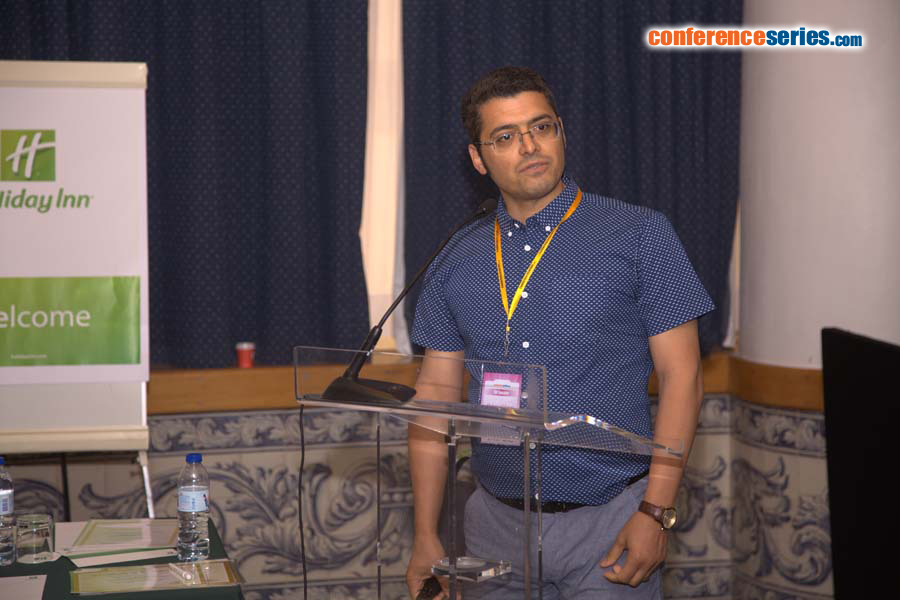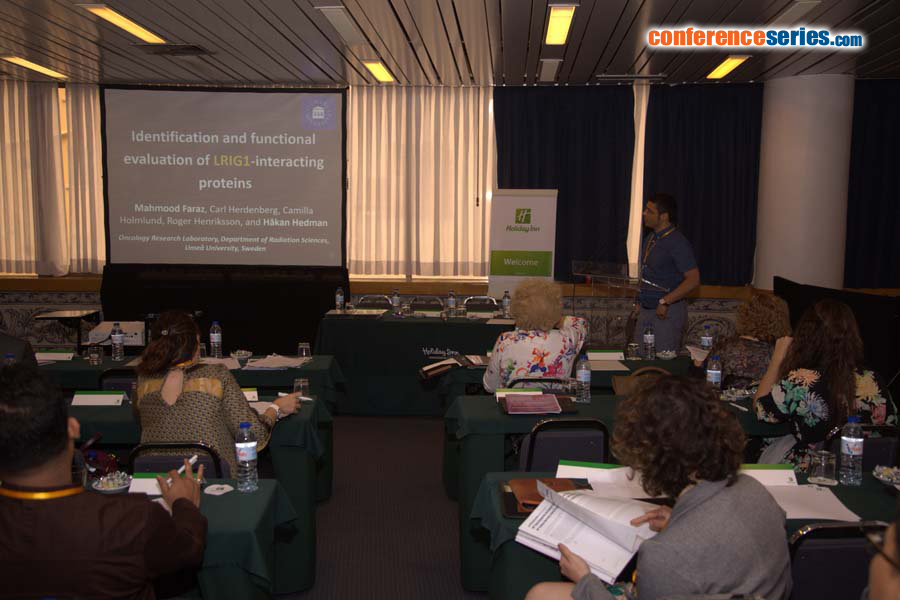
Mahmood Faraz
Umea University, Sweden
Title: Identification and functional evaluation of LRIG1-interacting proteins
Biography
Biography: Mahmood Faraz
Abstract
Leucine-rich repeats and immunoglobulin-like domains 1 (LRIG1) is a tumor suppressor and a negative regulator of different receptor tyrosine kinases (RTKs). The molecular mechanisms whereby LRIG1 mediates tumor suppression and regulates RTKs remain incompletely understood. Here, we performed a yeast two-hybrid screen to identify novel LRIG1-interacting proteins and datamined the BioPlex protein interaction data repository. All the putative LRIG1-interactors identified were functionally evaluated in a triple co-transfection system where HEK293 cells were co-transfected with platelet derived growth factor receptor alpha (PDGFRA) and LRIG1 together with shRNAs against the identified LRIG1-interactors.We took advantage of the ability of LRIG1 to downregulate the PDGFRA expression levels and evaluated the effects of the shRNAs against different LRIG1-interactors on the resulting PDGFRA levels. Based on the protein interaction data and our functional results, we propose a functional LRIG1 protein interaction network that contained mostly novel and unanticipated components. The network contained the functionally important LRIG1- interacting proteins RAB4A, PON2, GLRX3, GAL3ST1, TUBB8, ZBTB16, LRIG2, CNPY3, HLA-DRA, GML, CNPY4, LRRC40, and LRIG3, together with PTPRK and other proteins. In silico analyses of the cancer genome atlas (TCGA) data sets revealed consistent correlations between the expression of the transcripts for LRIG1 and its inter-actors ZBTB16 and PTPRK, and inverse correlations between the transcripts for LRIG1 and GLRX3. PON2 was further experimentally studied and found to co-localize with LRIG1 in
LRIG1 transfected cells. We suggest that the proposed LRIG1 protein interaction network will provide important novel leads for future studies aiming at understanding the molecular functions of LRIG1 and its tumor suppressive functions.






